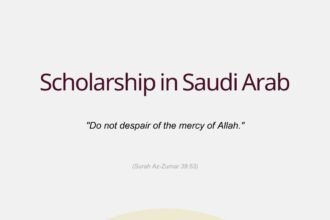Introduction
The Korea Advanced Institute of Science and Technology (KAIST) is one of the most prestigious science and technology institutions in the world, renowned for its rigorous academic standards and groundbreaking research. Its roots trace back to a critical period in South Korea’s industrial transformation during the late 1960s, when the country recognized the need to shift from labor-intensive light industries to technology-intensive heavy industries. However, the domestic infrastructure for science and engineering education was severely lacking, leading to the establishment of what would become a national research powerhouse.
Undergraduate Admissions for International Students
Eligibility
- Applicants must not hold Korean citizenship.
- Those with Korean ethnicity must provide documentation proving the renunciation of Korean citizenship for both the applicant and their parents.
Admission Requirements
- Academic Records: High school transcripts and graduation certificates.
- English Proficiency: While not mandatory, submitting English proficiency test scores (e.g., TOEFL, IELTS) is highly recommended.
- Recommendation Letter: One letter from a teacher or school official.
- Personal Statement and Study Plan: Essays outlining the applicant’s motivations and academic goals.
- Passport Copy: Valid identification document.
- Application Fee: Payment as specified in the application guidelines. admission.kaist.ac.kr
Application Timeline
- Spring Intake: Applications typically open in August.
- Fall Intake: Early applications in December; regular applications in March. KAIST 전기 및 전자공학부eeio.kaist.ac.kr
Graduate Admissions for International Students
Eligibility
- Applicants must not hold Korean citizenship.
- A Bachelor’s degree is required for Master’s programs; a Master’s degree for Doctoral programs.
Admission Requirements
- Academic Records: Official transcripts and degree certificates.
- English Proficiency: Minimum scores—TOEFL iBT 83, IELTS 6.5, TOEIC 720, or TEPS 326.
- Recommendation Letters: Typically two letters from academic or professional references.
- Statement of Purpose and Study Plan: Detailed essays outlining research interests and academic goals.
- Passport Copy: Valid identification document.
- Application Fee: Payment as specified in the application guidelines: admission.kaist.ac.kr+1ie.kaist.ac.kr+1KAIST 전기 및 전자공학부
Application Timeline
- Spring Intake: Applications usually open in August.
- Fall Intake: Early applications in December; regular applications in March.
Scholarships
KAIST provides the KAIST International Graduate Students Scholarship, covering full tuition, a monthly stipend, and health insurance.
For detailed information and to begin your application, please visit the official KAIST admissions websites:
Founding Origins: Addressing Brain Drain
In the 1960s, South Korea experienced a severe brain drain as many talented individuals pursued graduate studies in developed countries such as the United States, rarely returning home. To combat this trend and nurture domestic scientific capabilities, the Korean government sought to establish a premier institution of advanced science and engineering.
In 1968, the Korea Institute of Science and Technology (KIST) presented a report to President Park Chung-hee recommending the establishment of a graduate-level institution for science and engineering. Around the same time, Dr. Kun-mo Chung, a professor at New York Institute of Technology, submitted a proposal for a new graduate school of applied science and technology to the U.S. Agency for International Development (USAID). Dr. John Hannah, then head of USAID, was impressed and formally recommended the proposal to President Park.
KAIS: Korea Advanced Institute of Science (1971–1981)
The idea received governmental backing in April 1970, when President Park instructed the Ministry of Science and Technology to proceed with the independent establishment of the Korean Advanced Institute of Science (KAIS). With USAID providing $6 million in long-term education loans, a task force was formed with officials from the Ministry of Education, Ministry of Science, Economic Planning Board, KIST, and leading academics.
The Korean National Assembly passed the KAIS Act on July 16, 1970. This special legislation granted KAIS unprecedented autonomy, financial support, and military service exemptions, ensuring institutional independence and laying the foundation for its future academic excellence.
On February 16, 1971, KAIS was officially registered and launched. Its campus was located in Hongneung, Seoul, with construction completed in 1973. The first students were admitted in March of that year, and the inaugural lecture was delivered on September 17, 1973, by Nobel Laureate Dr. Walter H. Brattain.
Dr. Frederick Terman, known as the “Father of Silicon Valley,” visited Korea as the head of the USAID feasibility study team and wrote the influential report “Dream of the Future” in 1970, predicting KAIST’s emergence as a globally respected institution that would produce leaders in science, politics, and economics.
KAIST’s Transformation and Growth
In 1981, KAIS was merged with KIST under the directive of South Korea’s military government to streamline national research organizations. This merger led to the formation of KAIST as a unified entity, comprising both education and research functions. However, the integration of two fundamentally different institutions caused friction, and by 1989, KIST was reestablished as a separate entity.
Meanwhile, under the order of President Chun Doo-hwan in the early 1980s, plans for a new undergraduate-level institution were launched. Initially called Korea Institute of Industrial Technology, the project was integrated into KAIST, and the Korea Institute of Technology (KIT) was established in 1985 at the Daedeok Science Town in Daejeon. Its first undergraduate students were admitted in 1986.
In 1989, KIT was formally merged with KAIST, and the main campus was relocated to Daejeon. Construction of the new campus had already begun in 1987, and by 1992, the full transition was completed. The northern part of today’s Daejeon campus corresponds to the original KIT, while the eastern and western wings represent KAIST’s expanded facilities.
Global Recognition and Excellence
KAIST’s reputation grew rapidly in the 1990s and 2000s. According to a 1993 evaluation by the U.S.-based ABET (Accreditation Board for Engineering and Technology), KAIST’s graduate programs were ranked within the top 10% of U.S. standards, with undergraduate programs in the top 30%.
Leading science journals such as Nature and Science have cited KAIST as a key player in global science education with the potential to become one of the world’s top institutions. The faculty’s quality, world-class facilities, and student excellence have been widely acknowledged.
Strategic Mergers and Expansion
- In 2002, KAIST was selected to host the National Nano-Fab Center (NNFC), which opened in 2005. It was later renamed the National Nano Technology Center, supporting advanced research and training in nanoscience.
- In 2009, KAIST merged with the Information and Communications University (ICU), expanding its IT capabilities and designating the new Munji Campus as the central hub for these fields.
- The Korean Science Academy (KSA), the first high school for science-gifted students in Korea, became an affiliated institution of KAIST in 2009, further strengthening its education pipeline.
Legacy and Vision
Today, KAIST remains a beacon of scientific innovation and leadership in Korea and beyond. The university’s founding ideals—national development through science and technology—are as relevant as ever, reflected in its global partnerships, Nobel laureate lectures, and world-class research outputs.
From a bold experiment in reversing brain drain to a globally respected institute, KAIST has proven that with vision, policy support, and international collaboration, a nation can cultivate world-class academic and technological excellence.
Official Website: https://www.kaist.ac.kr






